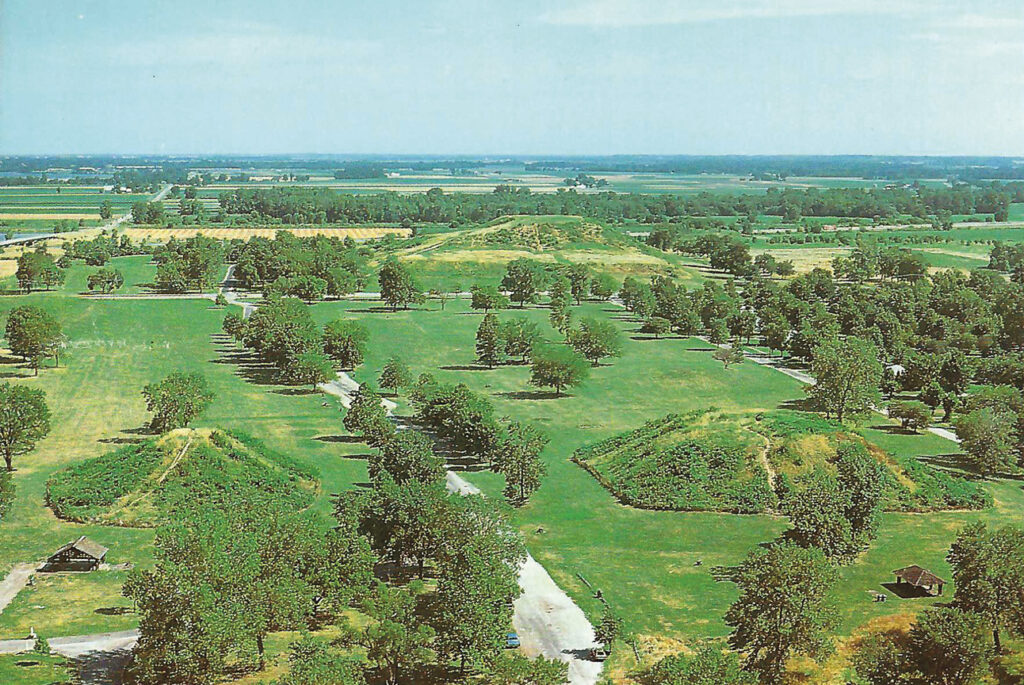
Michael Bushnell
Publisher
On the heels of last week’s profile of the Indian Mound located in Historic Northeast Kansas City, we’re traveling to Collinsville, Ill., just on the other side of St. Louis to visit the Cahokia Mounds State Historic Site.
In the foreground of the chrome style postcard are the twin mounds, and at the top center is Monk’s Mound, built in stages over a 300 year period of time by the Mississippian People between 900 and 1200 AD.
The entire park is home to over 50 mounds of varying size and construction type including ridge-top mounds, conical mounds and platform mounds, all part of a larger complex that spans roughly 2,200 acres.
Monk’s Mound is the largest prehistoric earthwork in the new world measuring over 15 acres, and rises in terraces to roughly 100 feet tall. Monk’s Mound was built to elevate the tribe’s most ceremonial building and was probably the residence of their leader. It garnered the name Monk’s Mound in the early 1800’s when European monks planted gardens on top of it.
The Grand Plaza extends between the mounds and it is likely that ceremonies were held there.
The Cahokia Mounds site geographically demonstrates the existence of a pre-urban society in which a political and economic hierarchy was responsible for the organization of labor, communal agriculture, and trade. This is reflected in the size and layout of the settlement and the nature and structure of the public and private buildings and mounds.
The core of the State Historic Site has been preserved as a protected public site since 1925 and a staffed interpretive center opened in 1989.


















